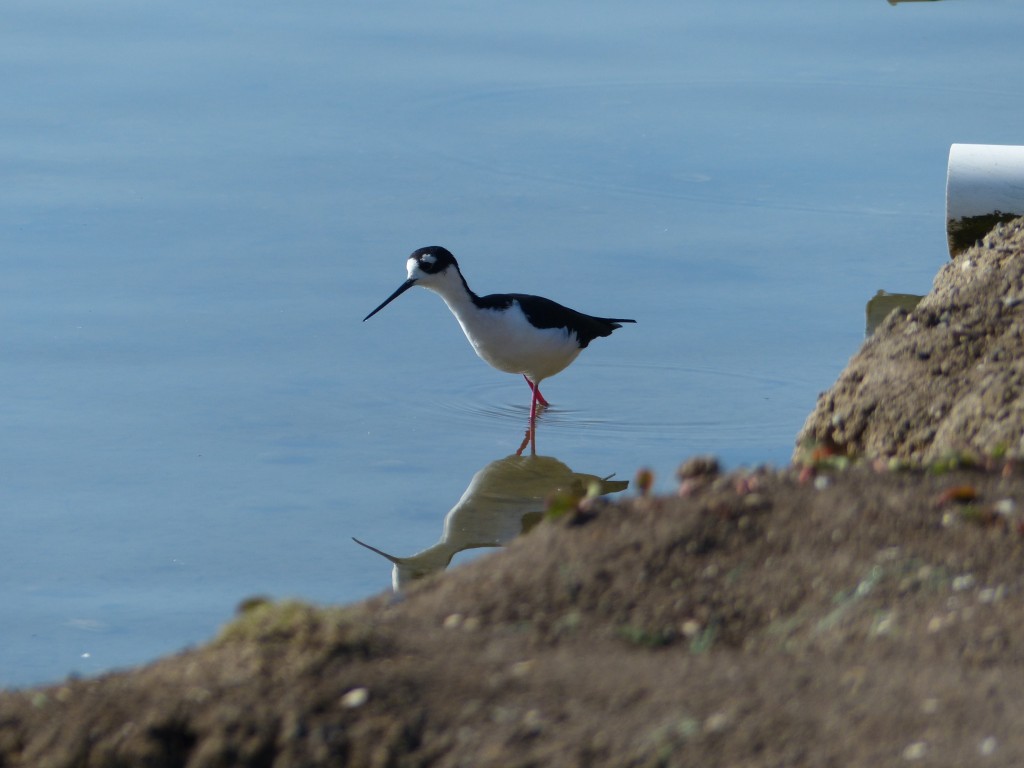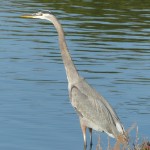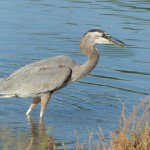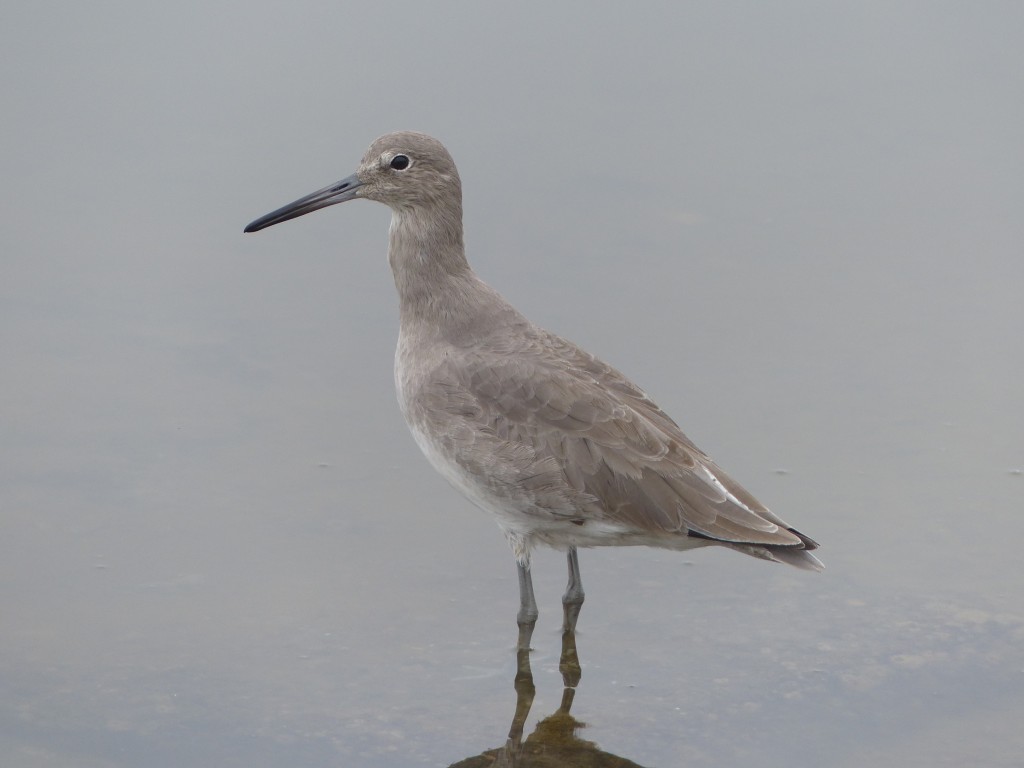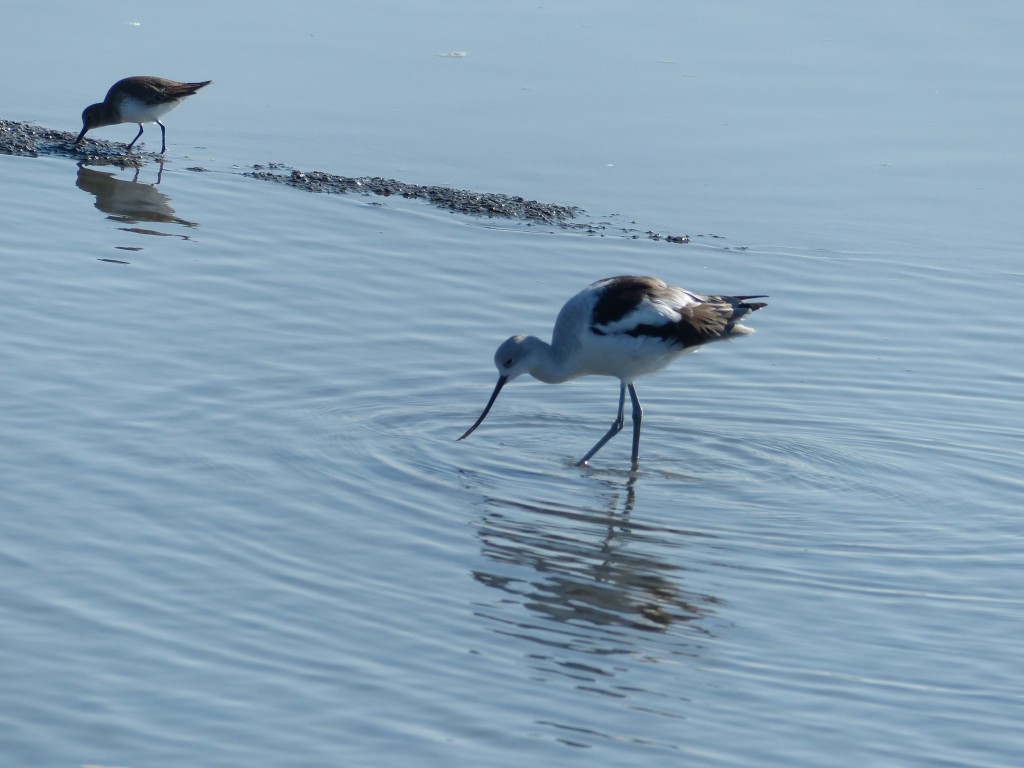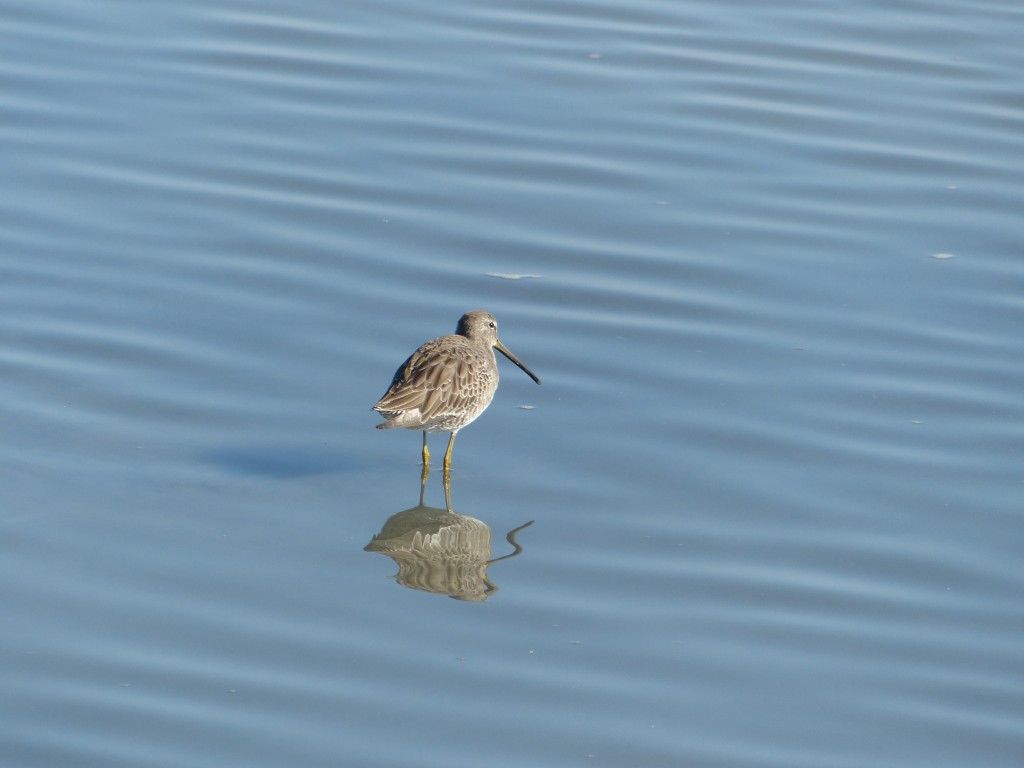Pink, long legs and a long beak, the Black-necked Stilt is pretty easy to recognize as they fly around with their pink legs (see gallery). As first we saw only two Black-necked Stilts, wading around in the water. The second disappeared till only his jet black head with streaks of white and a pointed bill was seen when he was only peeking from a long canal. (This was at Shoreline).
Then we saw a third Stilt. (This ended up with really good shots, where we got the Stilt not only wading, or in this case, standing, under the water but with a brilliant reflection on the surface of the water. In fact, this picture is so good it is first in the Gallery.)
As I said, we got some brilliant photos of Stilts. Unfortunately, some American Coots got in the way, so some Stilt photos have American Coots preening or some blurry American Coot images. (Still, I think that these are good.) Then we went to the final stop: Where there were not just 1, but at least 15 species of birds. The Black-necked Stilt, according to The Stokes Field Guide to the Birds of North America (pretty long name, is it not? I just call it Stokes.), is a juvenile from June to January. It is ready to breed from late April to August, with a peak in June (Wikipedia). Speaking of which, the American Avocet (Recurvirostra americana) also breeds from April to August.
Himantopus, (Black-necked Stilt), can interbreed with Recurvirostra, (American Avocet), but Wikipedia talks of only one hybrid in the San Francisco Zoo which died in 1974. Its dad was an Avocet and mom was a Stilt. Wish I could have seen the Avostilt. We seem to have seen only males, which are a glossy jet black, and washed with a neat white. Females are more of a slaty gray and deep brown bars on wings, (Similar white and pink legs to male.) (Personally, I think that the reason that the male Stilt has a brighter and more showy color is to attract mates. All male birds take part in courtship, except in a kind of sandpiper (plover) shorebird group called the Phalaropes. (There females take part in courtship, which is pretty odd.)
At the tidal mudflats (The best place to look for sandpipers and plovers, along with many other shorebirds), we saw an array of birds. These included the Greater Yellowlegs (Tringa, or Tringa melanoleuca), and the Western Willet (Tringa semipalmata inornata; although this bird was sighted generally toward the estuaries and bay.) There were many species of birds present, including the American Avocet (Recurvirostra americana), but these did not notice us, as they were all too busy foraging for food. (We met a man who told us to lie down on your stomach in the mudflats to get a good picture of the Shoveler ducks and the sandpipers, but the mudflats were mostly more of watery areas and some sandbars, mainly harboring Gulls as well as some odd brown birds. (I suspect that they might have been Pomarine or Parasitic Jaegars (Stercorarius pomarinus; Pomarine Jaegar; and Stercorarius parasiticus; Paradise Jaegar,) As now that we have covered a lot on these amazing birds, so now, are you ready to take a look at our Gallery?
Gallery (Including single (1) subspecies mexicanus, as according to the Stokes field Guide to the Birds of North America.)
– New Zealand Stilt (Himantopus)
– Pied Stilt (Himantopus)
